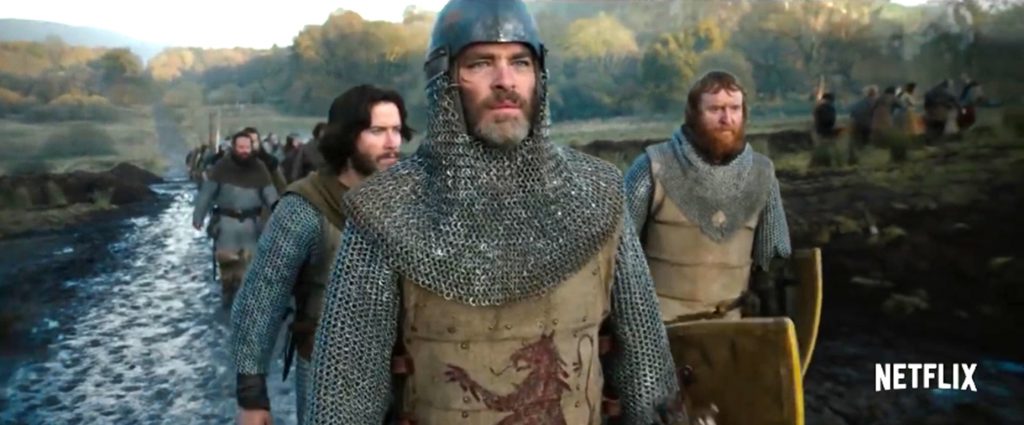 Watch the trailer here.
Watch the trailer here.
Review by Susan Swarbrick.
Born on July 11, 1274 in his mother’s Turnberry Castle, Robert the Bruce came from an established aristocratic family with links to the Scottish royal bloodline. When William Wallace resigned as Guardian of Scotland after the Battle of Falkirk in 1298, he was succeeded by Bruce and John Comyn who jointly took on the role, but the pair could not see past their personal differences. Bruce resigned in 1300 due to his quarrels with Comyn. According to the poet John Barbour in his narrative poem The Brus, penned around 1375, Comyn betrayed Bruce to King Edward I. Bruce met with Comyn at Greyfriars Kirk in Dumfries on February 10, 1306 to accuse him of treachery. They came to blows and Comyn was stabbed. After the death of Comyn, Bruce asserted his claim to the crown and began his campaign for the independence of Scotland.
The legend of Bruce and the spider was first published by Sir Walter Scott in Tales Of A Grandfather in 1828. The story goes that during the early days of Bruce’s reign – defeated by the English, driven into exile and a hunted man – he sought refuge in a small, dark cave. A spider caught Bruce’s eye and he watched fascinated as the tiny creature attempted to spin its web, failing over and over until it finally managed to stick a strand of silk to the cave wall. Bruce was inspired not to give up his own battle – supposedly the roots of the adage: “If at first you don’t succeed, try, try, try again” – and ultimately went on to achieve victory.
Bruce could speak three languages: Gaelic, Scots and Anglo-Norman French. The average life expectancy for a male child born in the UK between 1276 and 1300 was 31.3 years. Bruce, born in 1274, lived to the age 54. His skeleton was measured at 5ft 11in (180cm). It is estimated that Bruce would have stood at around 6ft 1in (186 cm) tall as a young man.
Bruce was married twice. His first wife Isabella of Mar died soon after giving birth to their daughter Marjorie on December 12, 1296 at the Manor of Cardross in Dunbartonshire. He then married Irish-born Elizabeth de Burgh in 1302.
After Bruce died on June 7, 1329, his body was buried in Dunfermline Abbey while his heart was interred in Melrose Abbey.
The film tells the story of Robert The Bruce (played by Chris Pine), who transformed from defeated nobleman, to reluctant King, to outlaw hero over the course of an extraordinary year. Forced into battle in order to save his family, his people and his country from the English invasion of medieval Scotland, Robert seizes the Scottish crown and rallies his countrymen to face off against the wrath of King Edward 1 and his son, the Prince of Wales.
The film begins with a 10-minute-long scene that includes an oath ceremony, a duel, and a catapult firing on a castle. It climaxes with the bloody and muddy Battle of Loudoun Hill with all the gory medieval mayhem and chainmail-piercing carnage you might expect from such a historical epic. It’s a viscerally effective sequence even if it never reaches the rabble-rousing heights of William Wallace in Braveheart.
Scotland looks magnificent in the film. It features Linlithgow Palace, St Michael’s Parish Church and Blackness Castle in West Lothian, Borthwick Castle, Doune Castle, Craigmillar Castle, Dunfermline Abbey, Glasgow Cathedral, Muiravonside Country Park near Falkirk, the Coral Beach, Talisker and Quiraing in Skye, Glencoe, Aviemore, Loch Lomond, Gargunnock near Stirling, the University of Glasgow, Mugdock Country Park near Milngavie (to film the Battle of Loudoun Hill), Seacliff Beach in East Lothian and the Northumbrian borders at Berwick-upon-Tweed.
Watch Outlaw King on Netflix.
Yes Edinburgh West has a website, Facebook, Twitter, National Yes Registry and a Library of topics on Scottish Politics, including Independence.
